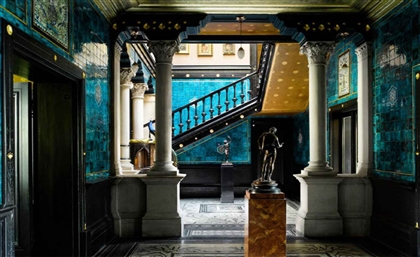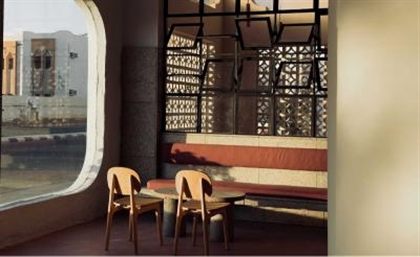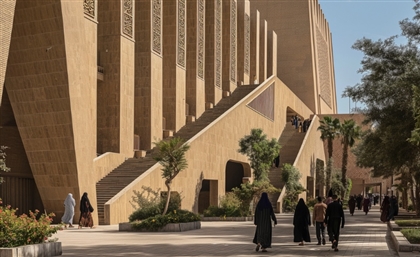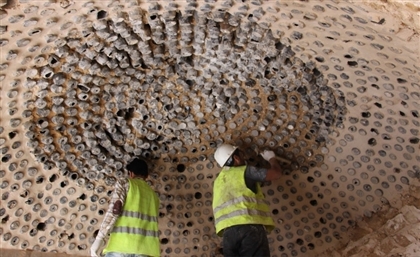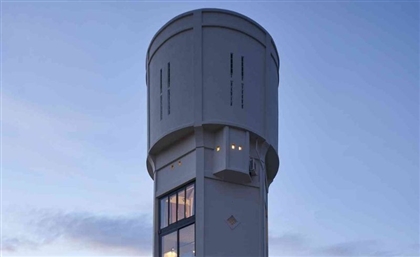Under the Louvre Museum Abu Dhabi’s Mashrabiya-Inspired Dome
French architect Jean Nouvel looked at traditional Arabic architecture to create the world-renowned structure.
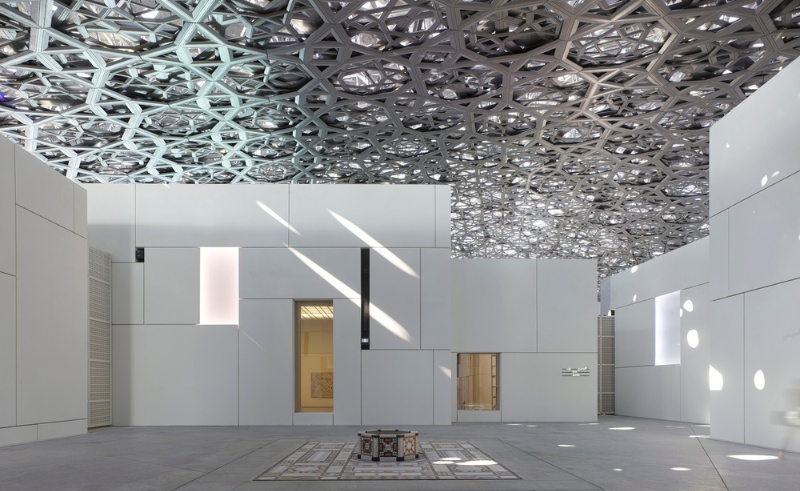
Calm and complex, the Louvre Abu Dhabi’s design is a serene medley of light, shadow and reflection. But did you ever wonder why its dome appears as if it’s floating? Or why is it so cinematic when you stand under it? Well, in a nutshell, this majestic effect is the result of French architect Jean Nouvel’s use of Arabic architecture, such as domes and mashrabiyas, masterfully blended with modern construction techniques.
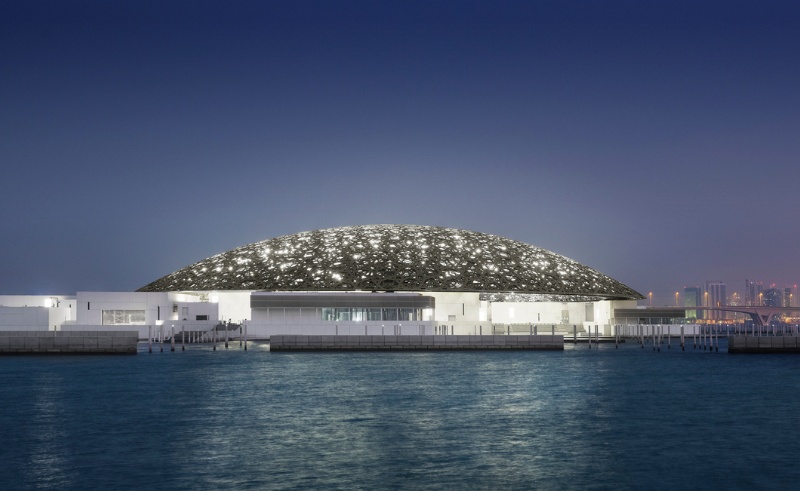
Located on Abu Dhabi’s Saadiyat Island, the world-renowned museum was built between 2013 and 2017. That said, its concept and design received awards before a single grain of sand was moved on the archipelago, and rightly so. Perforations that appear random, despite being meticulously calculated, created what the award-winning architect titled as the ‘rain of light’ effect.
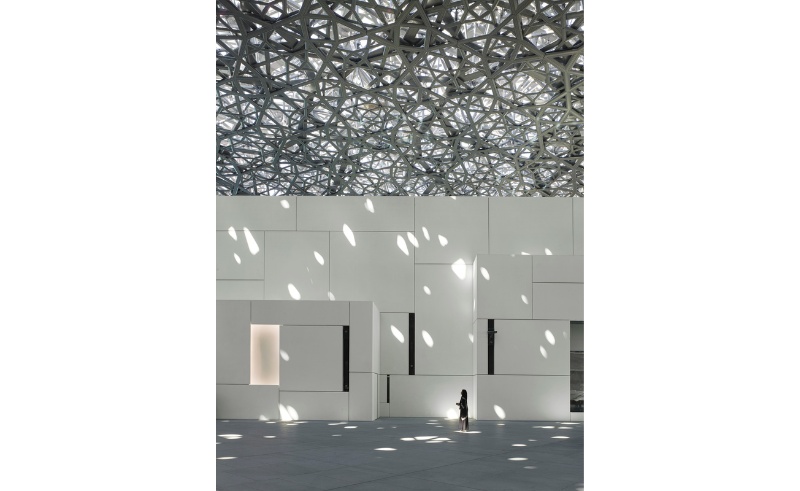
“It’s a project based on a major sign of Arabic architecture: the dome. But here the dome is a modern proposition due to the discrepancy it displays with tradition,” the Pritzker prize winning architect writes in the project’s description. The double dome, 180 metres in diameter, is punctuated by bursts of sun through its seemingly random perforations. But, if anything, it couldn’t be further away from being random.

Visible from the sea and the city of Abu Dhabi, the dome consists of eight different layers: four outer layers clad in stainless steel and four inner layers clad in aluminium, separated by a steel frame five metres high. The frame is composed of 10,000 structural components pre-assembled into 85 super-sized elements, each weighing up to 50 tonnes.
Constructed by the Austrian steel structures experts at Waagner Biro, the dome is supported by only four permanent piers, each 110 metres apart and hidden within the museum’s series of contrasting white buildings, which were inspired from Arab settlements. Thus, the dome appears as though it's floating because you wouldn’t be able to see its supports.
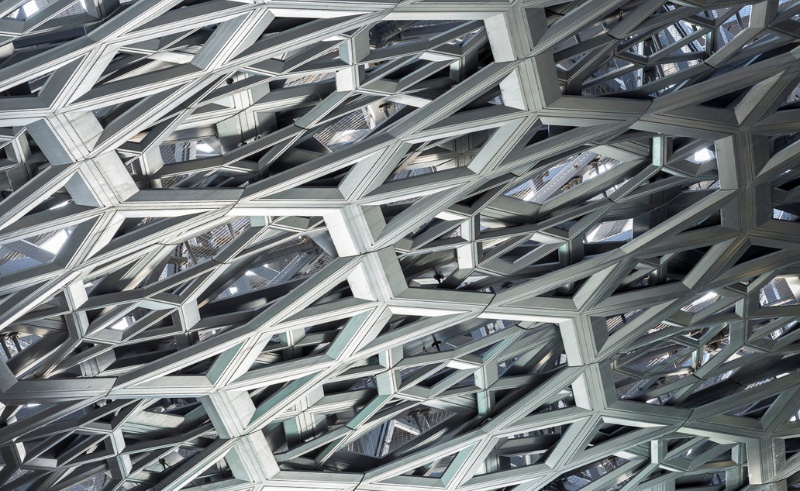
The museum’s buildings have facades that are covered by 3,900 panels of ultra-high performance fibre concrete. Those facades usually have serene lights beaming onto them due to the dome’s perforations. Its complex pattern is repeated at various sizes and angles in the aforementioned eight layers. Each ray of light penetrates every single one of the eight layers before appearing and then disappearing. As a result, visitors experience a ‘cinematic’ effect as the sun moves throughout the day.
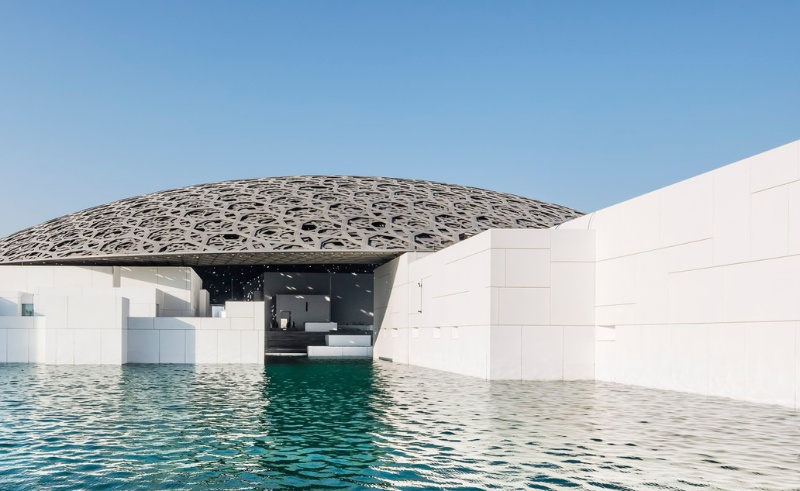
Dubbed ‘rain of light’, this light effect was the result of meticulous modelling over years and offers perhaps one of the most astonishing contemporary applications of traditional Mashrabiyas. Like a sky full of stars, the dome gleams under Abu Dhabi’s sun, providing an aesthetic consistent with the museum’s role as a sanctuary for the world’s most precious works of art.
- Previous Article Waterway Launches ‘MY ŌTEL’
- Next Article Legendary Egyptian Architect Ramses Wissa Wassef’s Graduation Project





